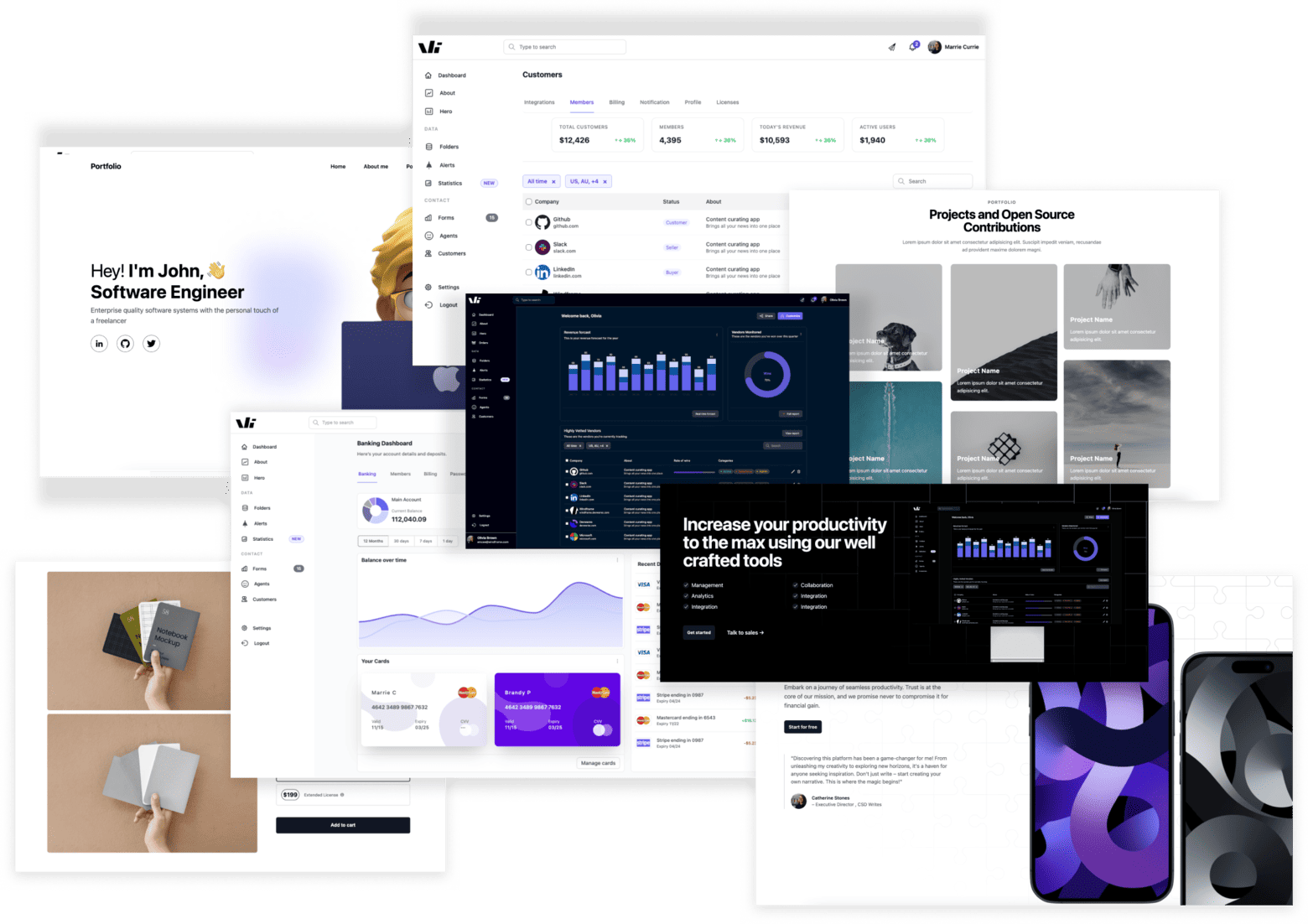Building with Headless CMS: Choosing the Right Platform and Integrating with Next.js

If you’ve been exploring the world of web development, chances are you’ve come across the term Headless CMS. It sounds a little mysterious, doesn’t it? Almost like something out of a tech fairytale, headless knights, but for websites. On the other hand, you might already be familiar with the more traditional side of things: systems like WordPress or Drupal that have been powering websites for decades.
In this post, we’ll break down what a headless CMS actually is, how it compares to a traditional CMS, why it’s become so popular in modern web development, and how you can use one in your own projects, specifically with Next.js. We’ll also look at different CMS options (both free and paid) and give you a practical example of integrating one into a Next.js app. Let’s get into it.
What is a Traditional CMS?
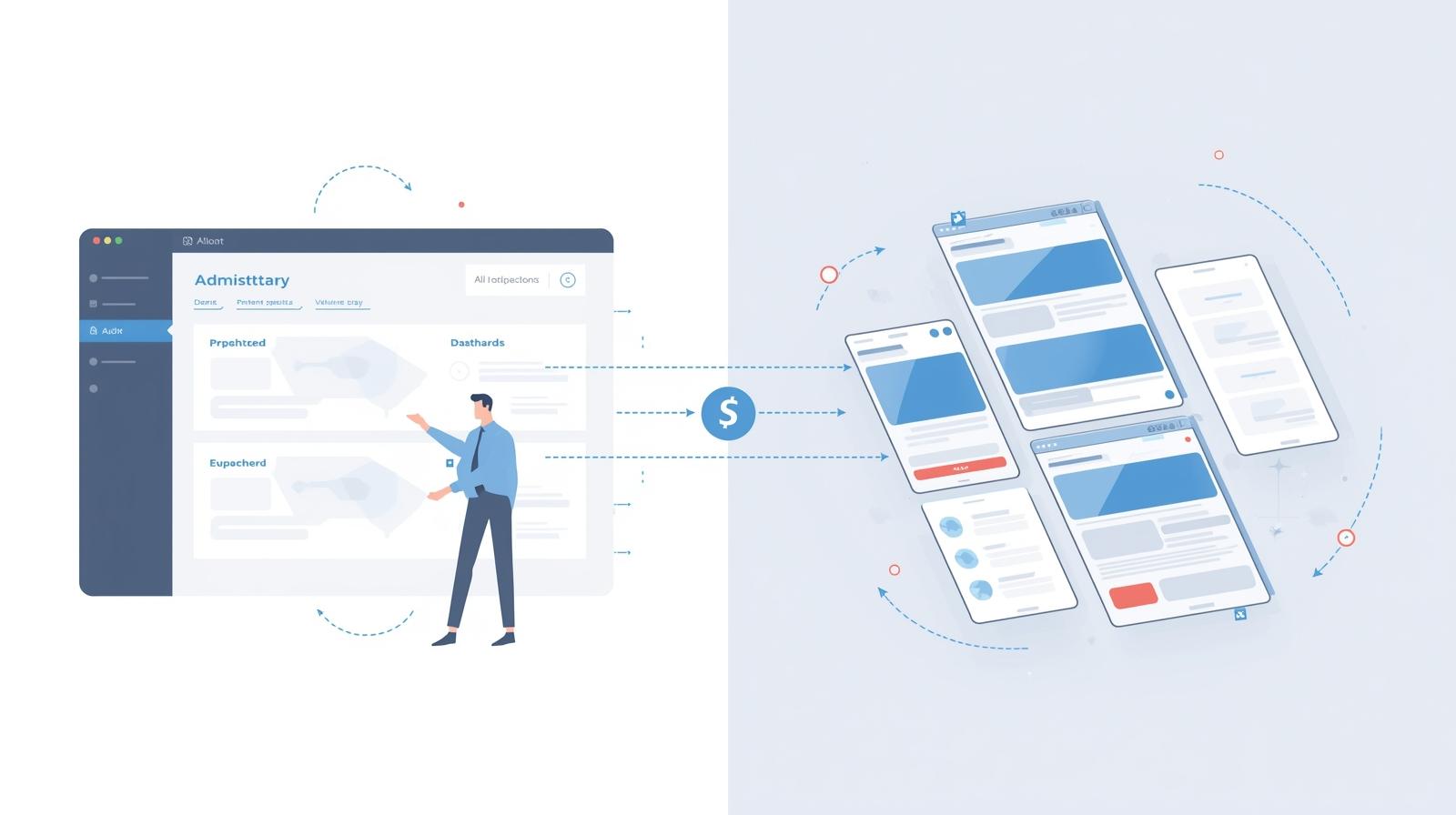
Let’s start with the familiar. A traditional CMS (Content Management System) is an all-in-one solution where your content and your presentation layer are tightly bound together. Think of it like a restaurant where the kitchen and the dining area are fused into one: you don’t just cook the food (content), you also serve it on specific plates (frontend).
Examples you’ve probably heard of:
-
WordPress
-
Drupal
-
Joomla
With these systems:
You manage your content (blogs, pages, images) in a back-end dashboard.
The CMS handles how that content is displayed on your website through themes and templates.
It’s convenient, especially for beginners, because everything is packaged in one place. But the downside? You’re somewhat stuck with the system’s rules, and extending it to modern needs (like building a mobile app, or serving content across multiple platforms) often feels like wrestling with spaghetti code.
What is a Headless CMS?
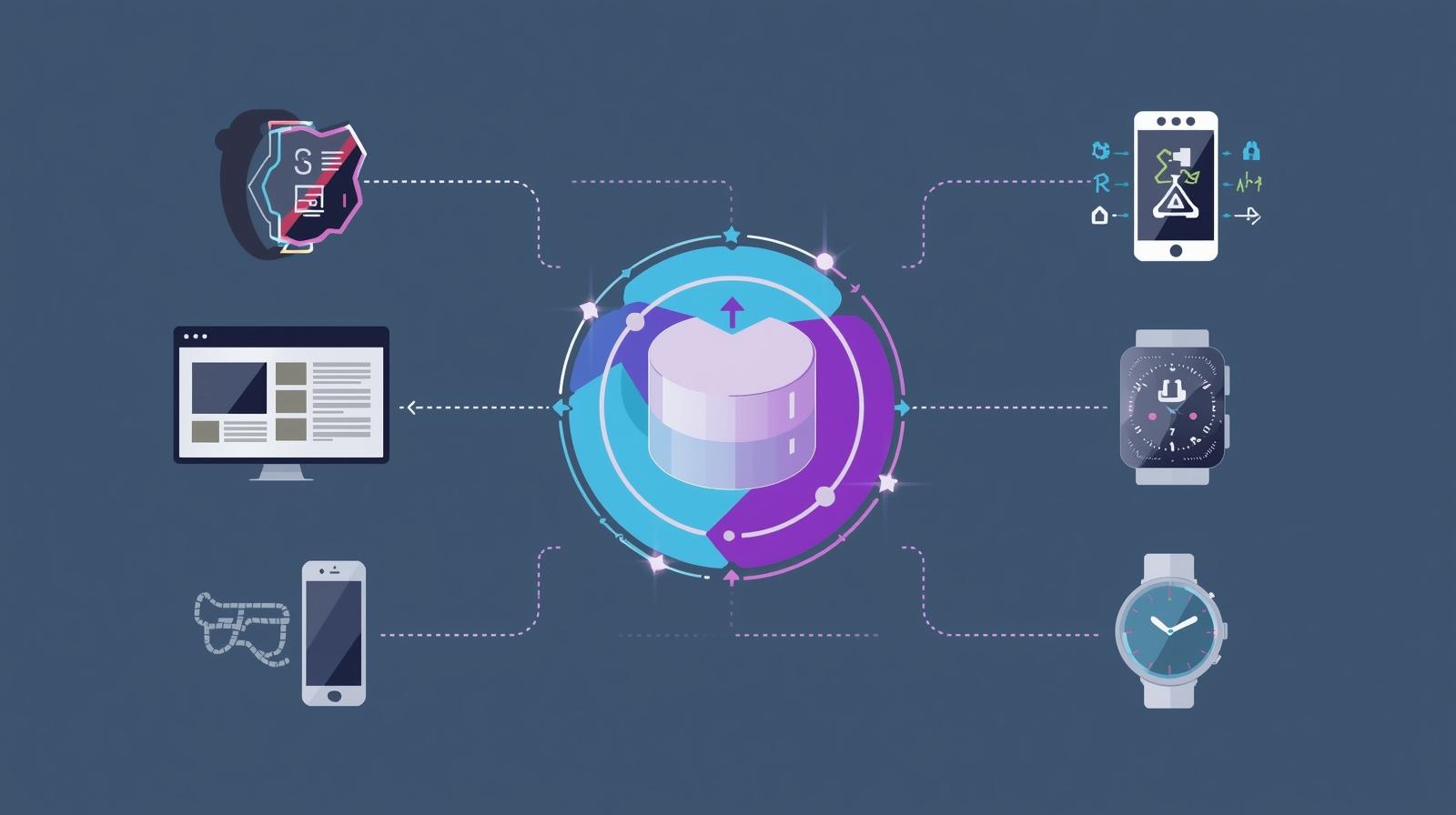
Here’s where things get exciting. A headless CMS decouples the “head” (the presentation layer, or frontend) from the “body” (the backend where content is stored and managed).
Imagine the same restaurant, but now the kitchen just prepares the food—it doesn’t decide how it’s served. You could serve it in a dining hall, package it for takeout, or even deliver it via drone (well, almost).
How it works:
-
Content is stored and managed in the CMS (just like before).
-
Instead of pushing that content directly to a theme or template, the CMS delivers it through an API (usually REST or GraphQL).
-
Your frontend (whether it’s a website built with Next.js, a mobile app, or even a smartwatch app) fetches the content and decides how to display it.
This flexibility is why headless CMSs are a favorite in modern development. They let developers build frontends with the frameworks they love, React, Vue, Svelte, Next.js—while still giving content teams a friendly dashboard to manage text, images, and media.
Headless vs. Traditional CMS: The Key Differences
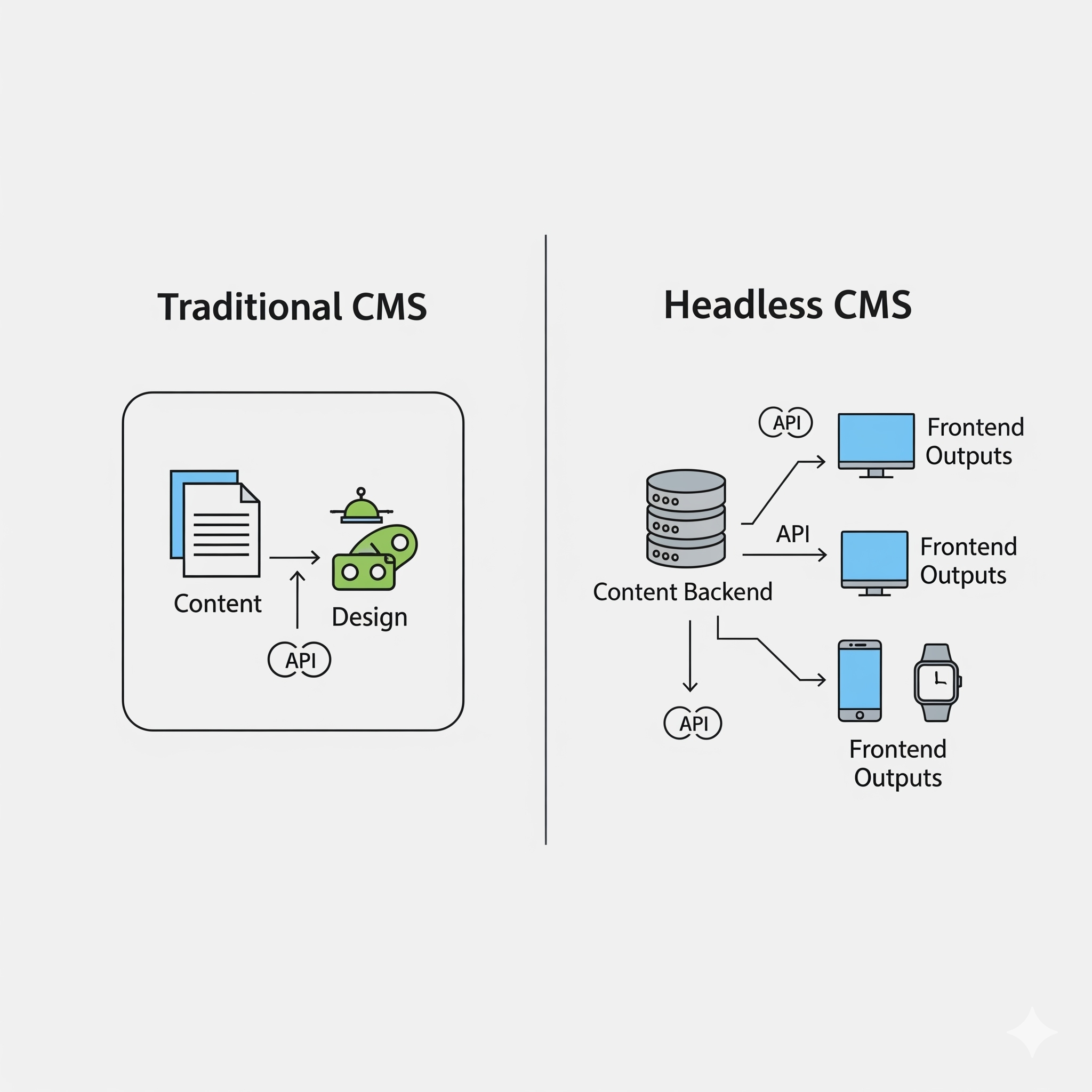
Here’s a quick comparison:
| Feature | Traditional CMS (e.g., WordPress) | Headless CMS (e.g., Contentful, Strapi) |
|---|---|---|
| Content + Design | Coupled together | Decoupled (frontend is separate) |
| Frontend Technology | Predefined (PHP, templates) | Any (React, Next.js, Vue, iOS apps, etc.) |
| Flexibility | Limited customization | Centers items vertically; |
| Use Cases | Websites and blogs | Websites, apps, IoT devices, multi-channel |
| Learning Curve | Beginner-friendly | Developer-focused, but manageable |
In short: Traditional CMS = convenience with limitations. Headless CMS = freedom with a bit more setup.
Why Use a Headless CMS for Your Project?
If you’re building a quick personal blog and don’t care about extending it to other platforms, a traditional CMS is fine. But if you’re building:
-
A modern, high-performance web app
-
A multi-channel content platform (website + mobile + smart devices)
-
A site where SEO, speed, and developer experience matter
…then a headless CMS is usually the smarter choice.
It separates concerns, gives developers creative freedom, and ensures that as technology evolves, your content system doesn’t hold you back.
Popular Headless CMS Options
There’s no shortage of choices here, and picking one depends on your needs and budget. Let’s break it down:
Free / Open-Source Headless CMS
-
Strapi – Self-hosted, open-source, very customizable.
-
Directus – Great for managing databases as a CMS.
-
KeystoneJS – Built with Node.js, developer-focused.
Paid / SaaS Headless CMS
-
Contentful – Enterprise-ready, polished, widely used.
-
Sanity.io – Real-time editing, collaborative features.
-
GraphCMS (now Hygraph) – Strong GraphQL support.
-
DatoCMS – Great balance of ease and performance.
Pro tip: If you’re just starting, try Strapi or Sanity. They’re approachable and have generous free tiers.
How to Choose the Right Headless CMS
Here’s a framework you can use:
-
Team Size & Skillset: Do you have developers comfortable with APIs? Or do you need something non-technical users can manage?
-
Hosting Preference: Do you want self-hosted (open source) or managed (SaaS)?
-
Budget: Some SaaS solutions get expensive quickly at scale.
-
Integration Needs: Do you need multi-language support, complex content modeling, or just a simple blog?
If you’re working with Next.js, you’ll want a CMS with strong API support, preferably GraphQL for efficiency. Sanity and Hygraph are excellent here.
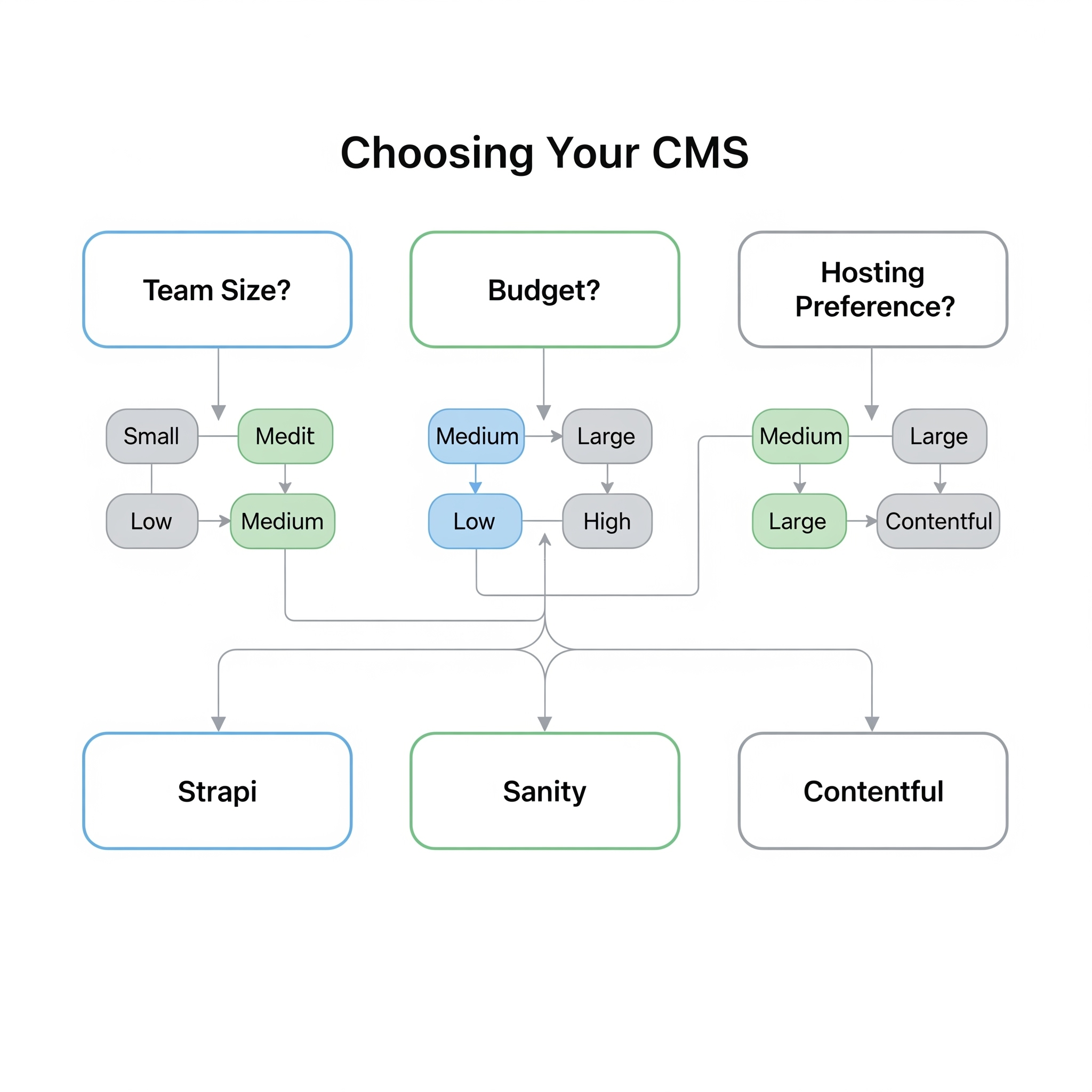
Example: Integrating Sanity with Next.js
Let’s walk through a simple example using Sanity—a popular headless CMS with a generous free tier.
Step 1: Set Up Sanity
Run the following in your terminal:
npm create sanity@latestThis will guide you through creating a new Sanity project (choose a blog schema to start).
Step 2: Install Dependencies in Next.js
In your Next.js project:
npm install next-sanity @sanity/clientStep 3: Connect Sanity to Next.js
Create a lib/sanity.js file:
import { createClient } from "@sanity/client";
export const client = createClient({ projectId: "your_project_id", // from sanity.json dataset: "production", // default dataset apiVersion: "2023-01-01", // use a date string useCdn: true, // set to false if you want fresh data});Step 4: Fetch Content
Inside pages/index.js:
import { client } from "../lib/sanity";
export async function getStaticProps() { const posts = await client.fetch(`*[_type == "post"]{title, slug, body}`); return { props: { posts } };}
export default function Home({ posts }) { return ( <div> <h1>My Sanity + Next.js Blog</h1> <ul> {posts.map((post) => ( <li key={post.slug.current}>{post.title}</li> ))} </ul> </div> );}And there you have it: a working blog pulling content directly from Sanity.

Conclusion
The rise of the headless CMS isn’t just a fad—it’s a reflection of how content is used today. Traditional CMS platforms served us well when the web was mostly static pages and blogs. But today, content is everywhere: websites, apps, devices, and even voice assistants.
A headless CMS ensures your content can adapt to all of these contexts without being locked into a single presentation layer.
If you’re a developer building with frameworks like Next.js, the headless approach gives you the freedom to craft fast, modern experiences while letting content creators do their job without touching code.
So the next time someone asks “Why headless?”, you can tell them: because it gives us the freedom to build without limits.
Windframe is an AI visual editor for rapidly building stunning web UIs & websites
Start building stunning web UIs & websites!
